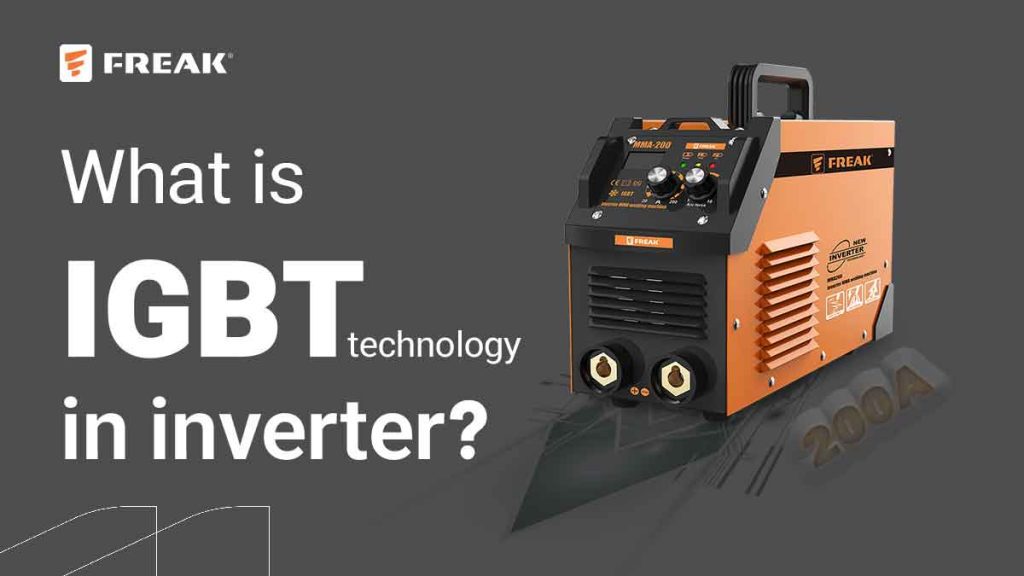What Is IGBT Technology in Inverters? In the world of power electronics, the Insulated Gate Bipolar Transistor (IGBT) is a revolutionary device that has transformed the efficiency and performance of inverters. An inverter, in simple terms, is a device that converts direct current (DC) power into alternating current (AC) power, enabling us to utilize electricity in various applications. The IGBT technology plays a crucial role in this conversion process, enhancing the efficiency, reliability, and overall performance of inverters. In this article, we will delve into the details of IGBT technology, its functioning, advantages, and applications.
1. Introduction to IGBT Technology
IGBT, short for Insulated Gate Bipolar Transistor, is a power semiconductor device that combines the characteristics of both Bipolar Junction Transistors (BJTs) and Metal-Oxide-Semiconductor Field-Effect Transistors (MOSFETs). It is widely used in power electronic systems, particularly in inverters, due to its ability to handle high voltage and high current levels.
2. How IGBT Technology Works
IGBTs consist of three main layers: the N-type drift region, the P-type base region, and the N-type emitter region. The operation of an IGBT involves the control of the current flow between the collector and the emitter by the gate voltage. When a positive voltage is applied to the gate terminal, it creates an electric field that enables the flow of current from the collector to the emitter. Conversely, when the gate voltage is removed, the IGBT turns off and stops conducting current.
3. Advantages of IGBT Technology

IGBT technology offers several advantages over other power semiconductor devices. Some key benefits include:
a. High Power Handling Capability
IGBTs can handle high voltage and current levels, making them ideal for applications requiring power conversion. They can efficiently handle large power loads without compromising on performance.
b. Fast Switching Speed
IGBTs have a fast switching speed, allowing them to rapidly turn on and off. This characteristic is essential in applications that require precise control of power, such as motor drives and renewable energy systems.
c. Low Saturation Voltage Drop
IGBTs have a low voltage drop across the collector and emitter, leading to reduced power losses. This low saturation voltage drop contributes to increased efficiency and improved overall performance of inverters.
d. Thermal Stability
IGBTs are designed to withstand high operating temperatures, ensuring their reliability and longevity. The ability to handle heat makes them suitable for demanding applications where temperature fluctuations are common.
4 . Applications of IGBT Technology
IGBT technology finds extensive use in various industries and applications. Some notable applications include:
a. Motor Drives
IGBTs are widely used in motor drives, allowing precise control of motor speed and torque. They enable efficient motor control in industrial automation, electric vehicles, and appliances.
b. Renewable Energy Systems
IGBTs play a crucial role in renewable energy systems, such as solar and wind power. They facilitate the conversion of DC power generated by solar panels and wind turbines into usable AC power for homes, businesses, and the power grid.
c. Uninterruptible Power SuppliesIGBTs are essential components in uninterruptible power supplies (UPS) that provide backup power during electrical outages. They ensure a smooth transition from the main power source to the battery power source, preventing disruptions and protecting sensitive equipment.
d. High-Frequency Welding
IGBTs are used in high-frequency welding machines, enabling precise control of the welding process. They ensure stable and efficient power delivery, resulting in high-quality welds in industries such as automotive, aerospace, and manufacturing.
e. Induction Heating
IGBTs play a significant role in induction heating systems, which are utilized in various applications like metal hardening, forging, and cooking appliances. They allow for efficient and controlled heating by delivering high-frequency power to induce heat in conductive materials.
5. The Future of IGBT Technology

As technology continues to advance, the future of IGBT technology looks promising. Researchers and manufacturers are constantly working on improving the performance and efficiency of IGBTs. Some areas of development include:
Enhanced switching speeds for even faster and more precise power control.
Integration with other power electronic devices to create more compact and efficient systems.
Reduced power losses and improved thermal management for higher efficiency.
Development of wide-bandgap semiconductors like silicon carbide (SiC) and gallium nitride (GaN) for further performance enhancements.
With these advancements, IGBT technology is expected to continue revolutionizing power electronics and finding new applications in diverse industries.
6 .Conclusion
In conclusion, IGBT technology has become a cornerstone in the world of power electronics, particularly in inverters. Its unique combination of characteristics from both BJTs and MOSFETs allows for efficient and reliable power conversion. With its high power handling capability, fast switching speed, low voltage drop, and thermal stability, IGBTs have enabled significant advancements in motor drives, renewable energy systems, welding machines, induction heating, and more. As technology progresses, further improvements and applications of IGBT technology are on the horizon, promising a future of even more efficient and advanced power electronic systems.


